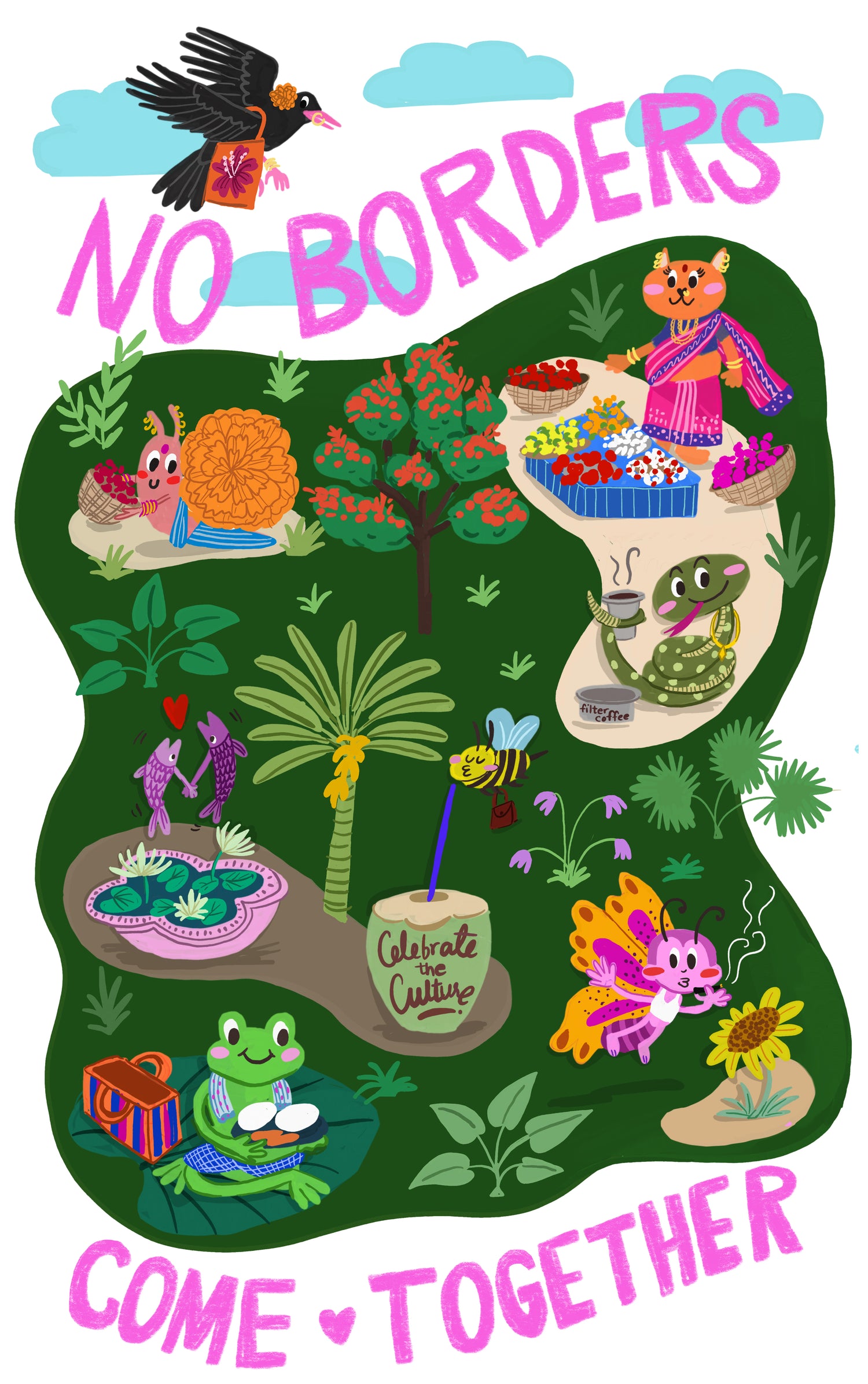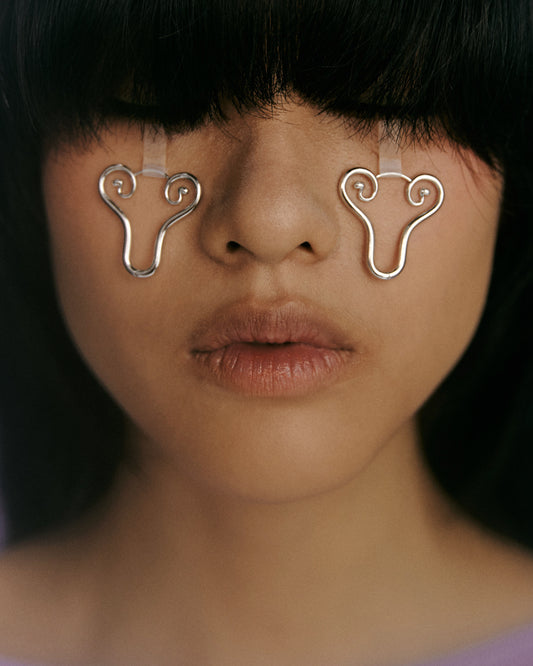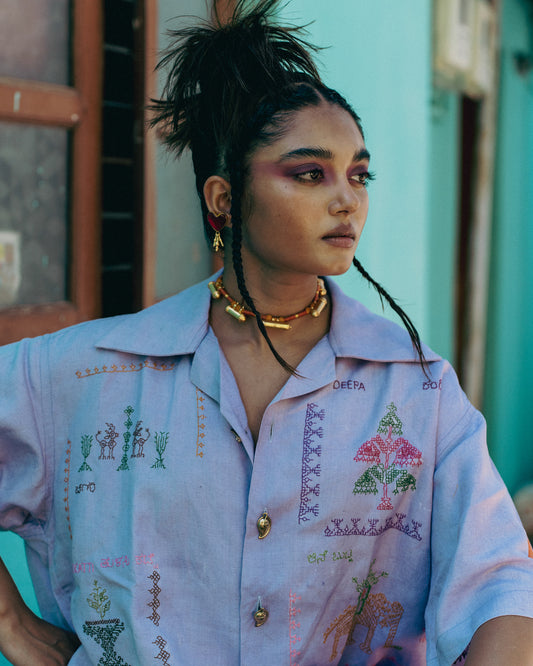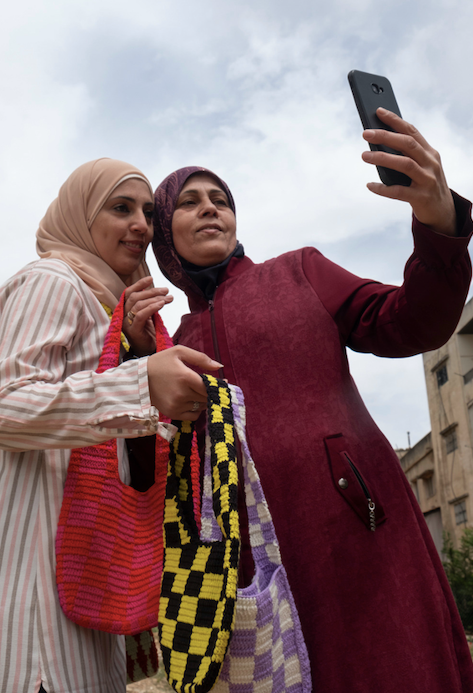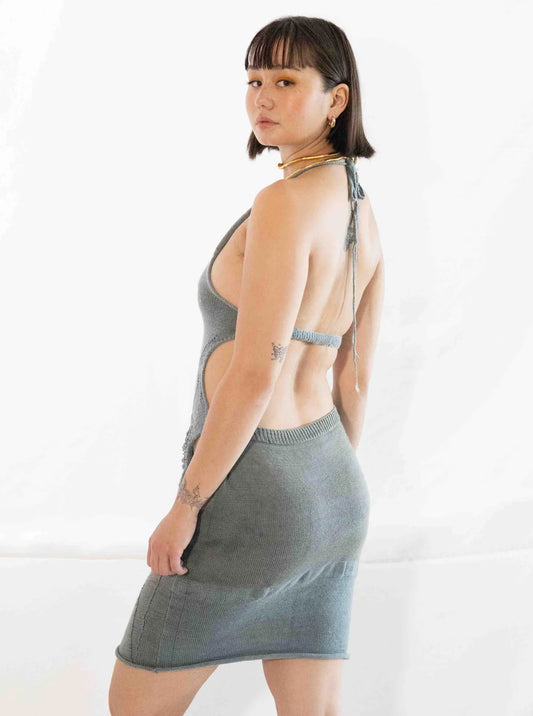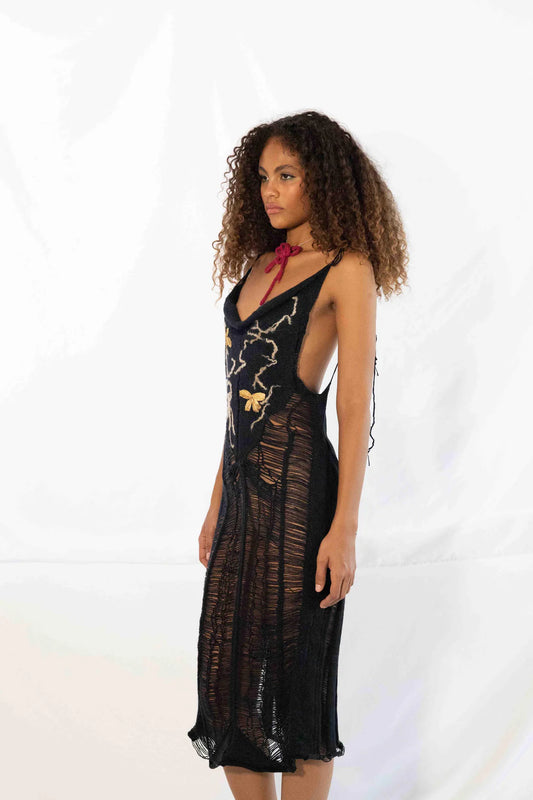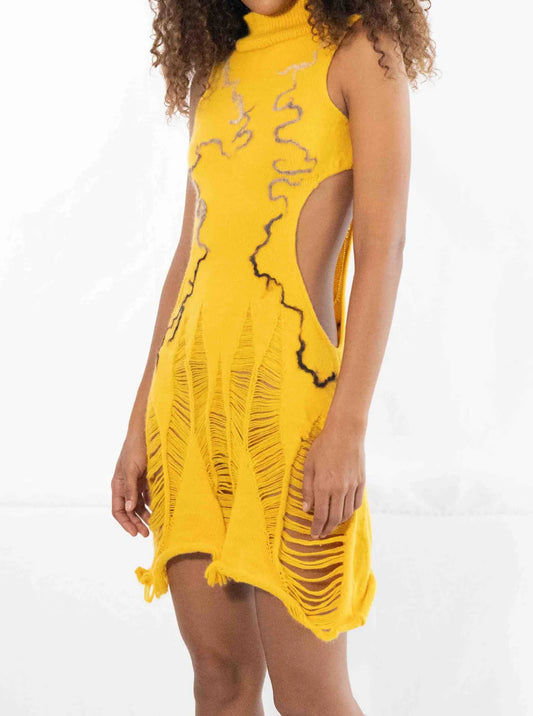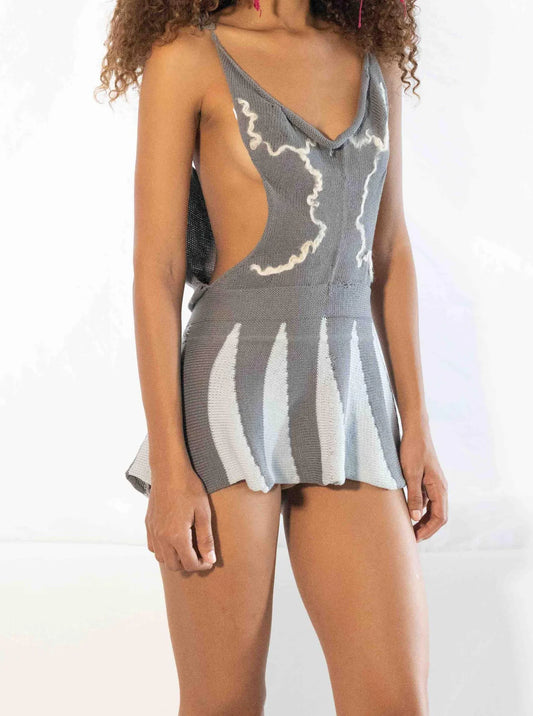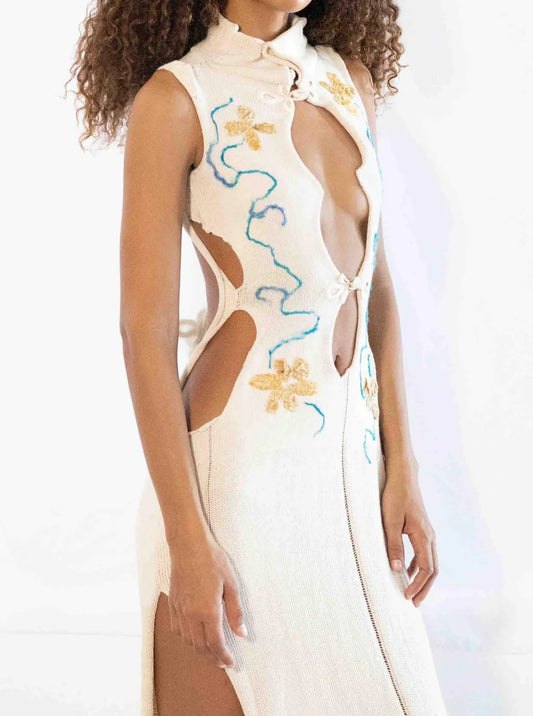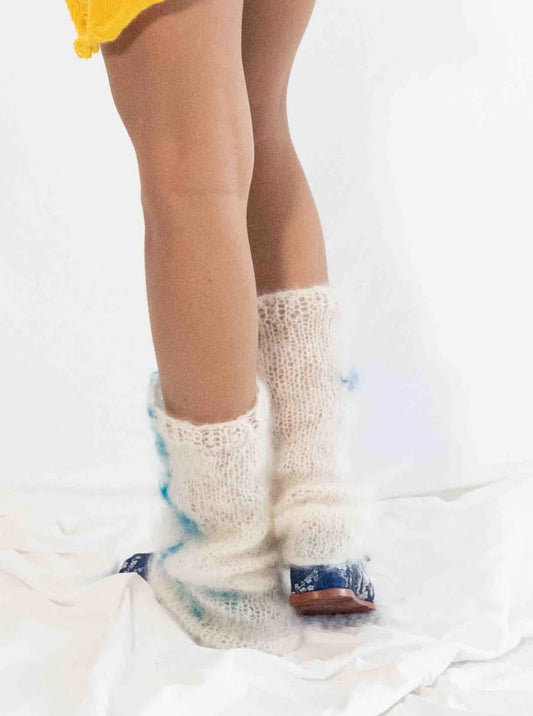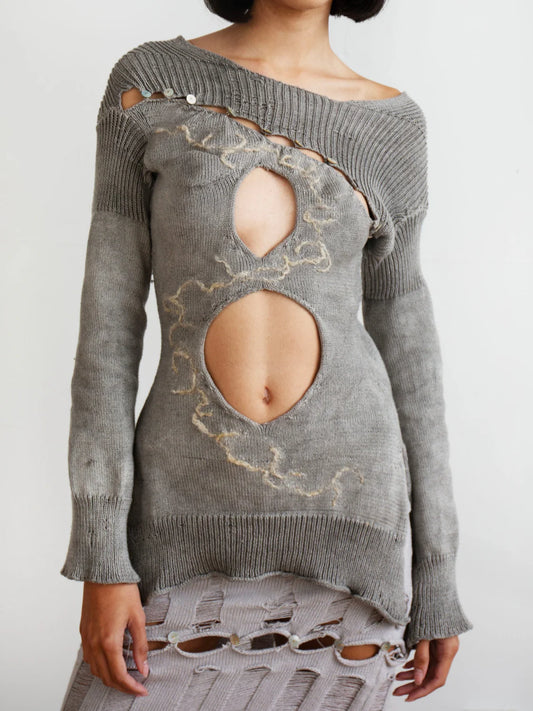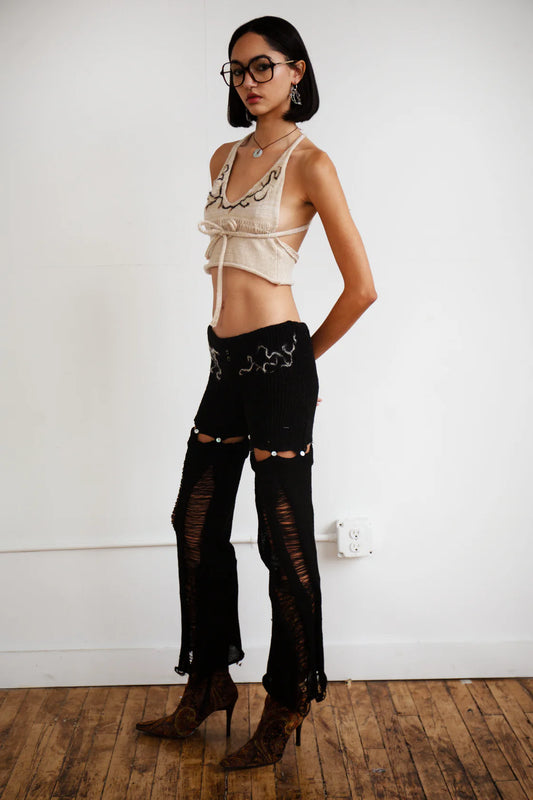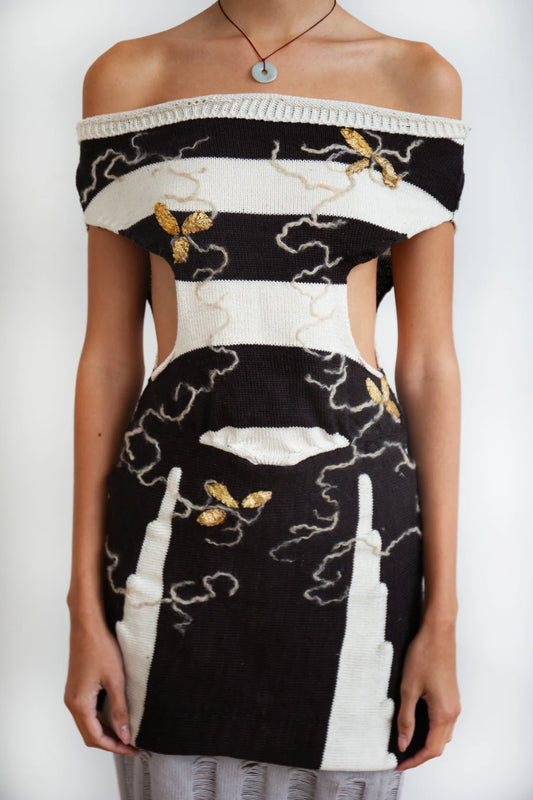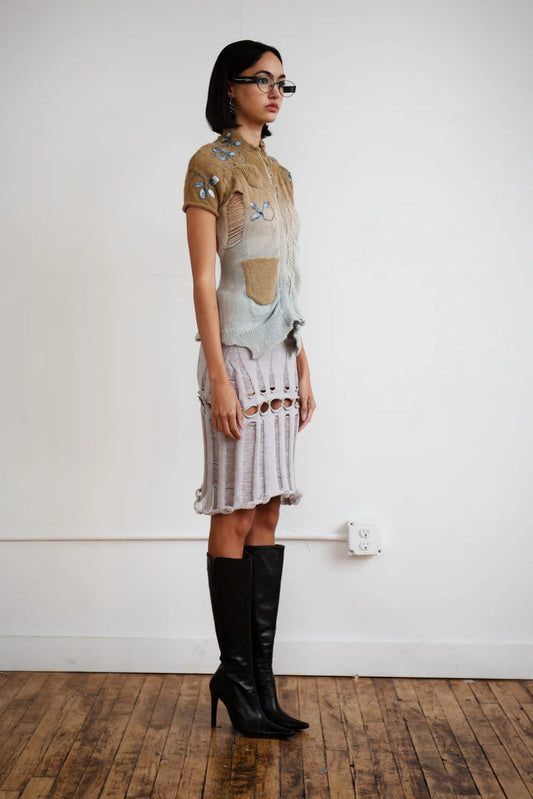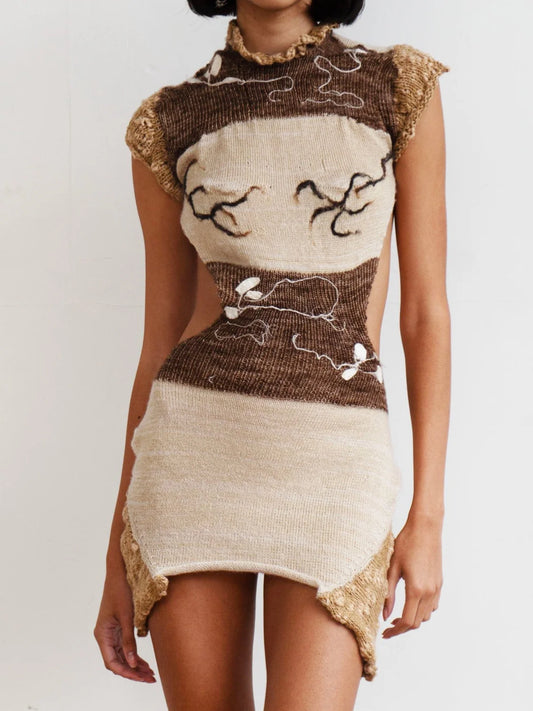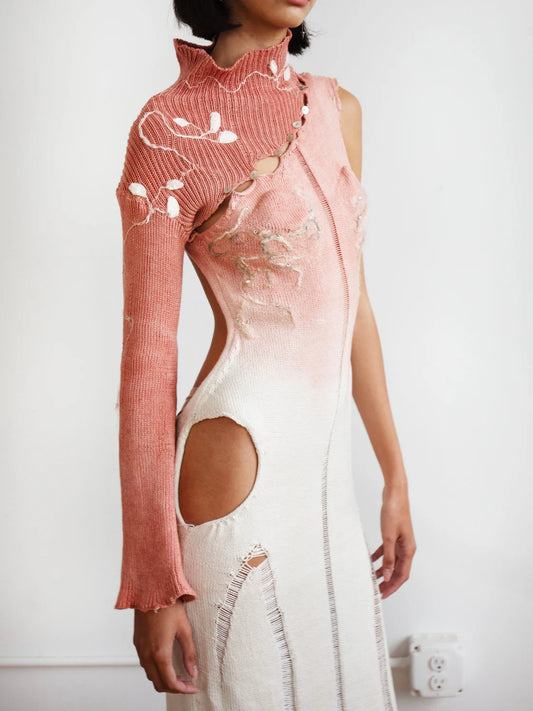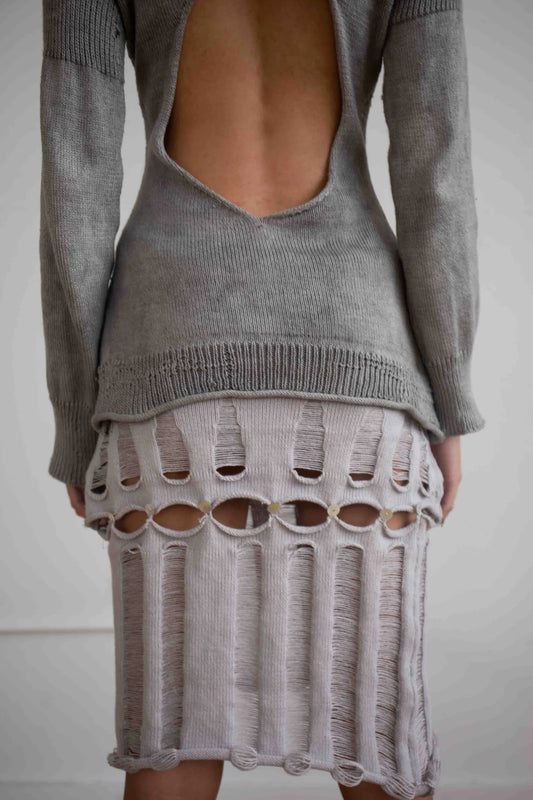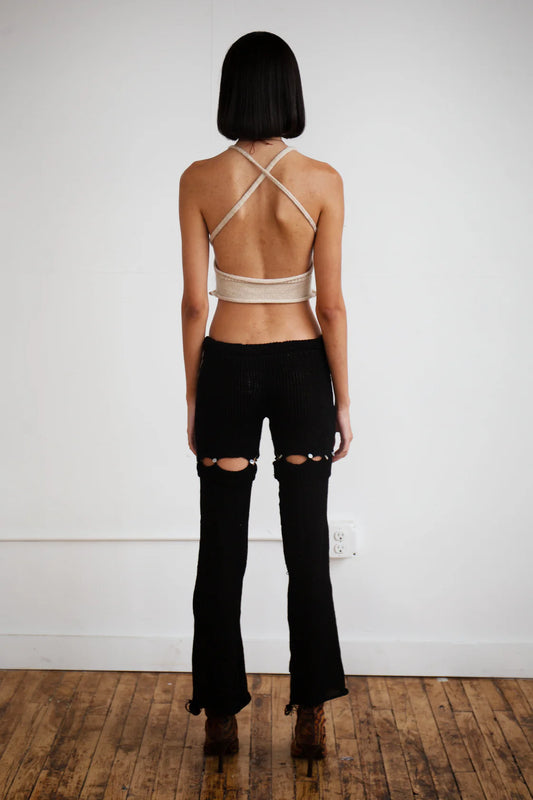Collection: GRACE GUI
Rooted in Brooklyn, GRACE GUI is a farm-to-fashion knitwear project that reimagines heritage through the lens of introspection and craftsmanship. Launched in 2023 by Grace Wang, the brand is a personal tribute to the dualities of identity, weaving together her Chinese heritage and the Americana influences that once challenged her sense of belonging.
Each GRACE GUI piece is meticulously hand-crafted in Grace’s Bushwick studio, where sericulture, natural dyeing, and sustainability take center stage. From raising silkworms and caring for her angora rabbit to sourcing fibers exclusively from neighbors in New Jersey where she grew up, GRACE GUI celebrates an intimate connection to community and the natural world. By using natural dyes derived from plants and minerals, the brand emphasizes its dedication to materials that are as thoughtful as they are beautiful. The patented felting techniques developed by Grace lend an architectural yet organic quality to the garments, making each piece a one-of-a-kind expression of innovation and tradition.
GRACE GUI is more than a fashion label—it is a living narrative of multicultural exploration. Its collections reflect the fluidity of identity, using fiber and form to articulate the complexities of diasporic living while celebrating the beauty in reconciling past and present. By prioritizing natural materials, local artisanship, and a zero-waste approach, GRACE GUI embodies a vision of fashion as both art and responsibility.

-
Saturday Indigo Silk Cocoon Dress Vendor:
GRACE GUIRegular price ₹41,686Regular priceUnit price / per -
Silk Cocoon Drop Stitch Layering Dress Vendor:
GRACE GUIRegular price ₹35,882Regular priceUnit price / per -
Monday Angora Drop Stitch Dress Vendor:
GRACE GUIRegular price ₹41,686Regular priceUnit price / per -
Princess Seam Mini Dress Vendor:
GRACE GUIRegular price ₹35,882Regular priceUnit price / per -
Good Luck Wedding Gown Vendor:
GRACE GUIRegular price ₹48,274Regular priceUnit price / per -
Monday Leg Warmers Vendor:
GRACE GUIRegular price ₹8,891Regular priceUnit price / per -
Am I Covered Enough Long Sleeve Vendor:
GRACE GUIRegular price ₹60,462Regular priceUnit price / per -
Ink Wrap Top Vendor:
GRACE GUIRegular price ₹21,119Regular priceUnit price / per -
Off Shoulder Ink Dress Vendor:
GRACE GUIRegular price ₹41,686Regular priceUnit price / per -
Off Duty Raglan Zip Up Vendor:
GRACE GUIRegular price ₹62,614Regular priceUnit price / per -
In The Woods Dress Vendor:
GRACE GUIRegular price ₹69,989Regular priceUnit price / per -
Diaspora Wedding Gown Vendor:
GRACE GUIRegular price ₹77,699Regular priceUnit price / per -
She's Multi-Faceted Skirt Vendor:
GRACE GUIRegular price ₹40,877Regular priceUnit price / per -
She's Multi-Faceted Bottoms Vendor:
GRACE GUIRegular price ₹40,877Regular priceUnit price / per -
Silk Cocoon Blazer in Navy Vendor:
GRACE GUIRegular price ₹54,433Regular priceUnit price / per
